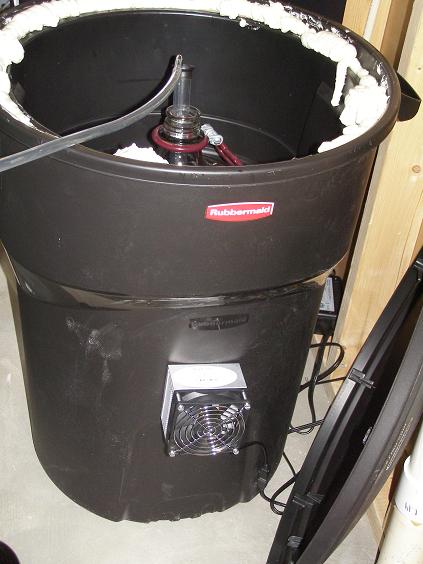I have found that attempting to control the temperature inside my glass carboy by manipulating the temperature of the surrounding air (refrigerator) is not really providing the type of control I desire. For ales, during heavy fermentation stage my carboy temperature rises as much as 3 degrees above my desired setpoint. Lager control is better due to the much slower fermentation.
The trouble is that the heat transfer coefficient of a glass carboy in air is horrible (i.e the thick glass is a good insulator and does a decent job trapping in the heat from fermentation). At times heat generation for 5 gallons of typical wort can approach 50 - 100 Btu/hr. The heat has to leave through the thick glass into the cold air by natural convection.
I realize that I could ditch the glass carboys and move up to the big leagues with stainless conical, but my wallet isn't ready for the big time. That is why I am considering moving to a water jacket. Typically, the heat transfer coefficient is increased by a factor of ~20 if the cooling fluid is changed to water versus air. This will be my first step - determining the overall heat transfer coefficient for my glass carboy in both air and in water. If the difference is as significant as I expect, I will press on!
Anybody tried this water cooled idea with a glass carboy fermenter?
The trouble is that the heat transfer coefficient of a glass carboy in air is horrible (i.e the thick glass is a good insulator and does a decent job trapping in the heat from fermentation). At times heat generation for 5 gallons of typical wort can approach 50 - 100 Btu/hr. The heat has to leave through the thick glass into the cold air by natural convection.
I realize that I could ditch the glass carboys and move up to the big leagues with stainless conical, but my wallet isn't ready for the big time. That is why I am considering moving to a water jacket. Typically, the heat transfer coefficient is increased by a factor of ~20 if the cooling fluid is changed to water versus air. This will be my first step - determining the overall heat transfer coefficient for my glass carboy in both air and in water. If the difference is as significant as I expect, I will press on!
Anybody tried this water cooled idea with a glass carboy fermenter?



